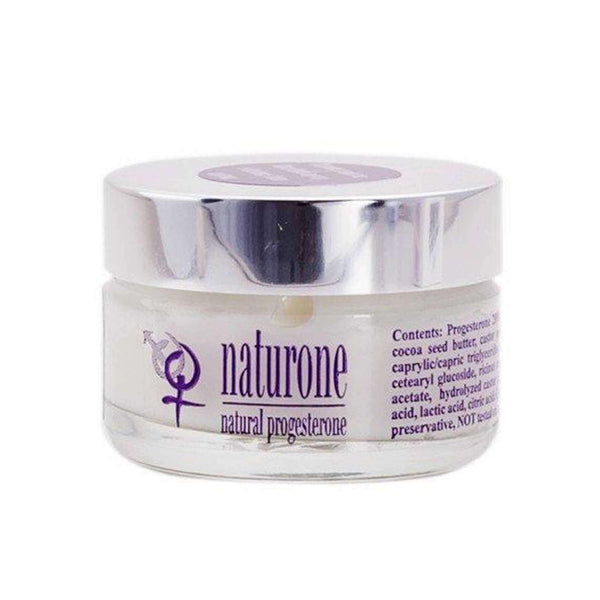-{[{ ((ps.selectedVariant.compare_at_price - ps.selectedVariant.price) / ps.selectedVariant.compare_at_price * 100 ) | number:0 }]}
%


NATURONE NATURAL PROGESTERONE CREAM
R 624.95
R 749.95
Unavailable
- Naturone Natural Progesterone Cream supports hormonal balance, especially during peri-menopause and menopause when progesterone levels decline.
- Its trans-dermal formula enhances absorption, bypassing digestive issues that can affect oral treatments.
- Many women experience benefits quickly, though some may require up to three months for full effect, reflecting individual differences.
- This cream offers a gentle, natural alternative to synthetic hormones used in conventional HRT.
- Formulated in a vegetable-based aqueous cream with a skin-friendly pH of 5.5, it ensures compatibility and safety for regular use.
Each bottle of Naturone contains:
- Progesterone 2000 mg
- Cocoa seed butter (theobroma cacao)
- Shea butter ( butyrospermum parkii)
- Macadamia ternifolia nut oil
- Grapeseed oil (vitis vinifera)
- Castor seed oil (ricinus communis)
- Beeswax (cera alba)
- Carnauba wax
- Capric/caprylic triglycerides
- Vitamin E as the anti-oxidant
- Ceto Stearyl alcohol
- Sodium benzoate
- Deionised water
Directions:
- Apply once or twice a day as needed. Start on the 12th day after the first day of menstrual flow through the 27th day, if you are still having periods.
- Bio-identical natural progesterone cream is easily and quickly absorbed into the body. You can apply it almost anywhere with success, though it is best not to put it on fatty areas, as the fat tend to hold it. For best absorption, intra-vaginal application at night is best.
- Rotate the areas you apply it to. Avoid saturating any one area, and overloading the cell receptors. It is best absorbed where the skin is relatively thin and well supplied with capillary blood flow, such as the upper chest and inner thighs, inner arms, but best intra-vaginal.
- Massage the progesterone cream into your skin until it is noticeably absorbed. Natural bio-identical progesterone cream should not be applied on top of other body creams or perfumes. This may interfere with proper absorption.
- It is important to use at least one jar per month for the first 3 months to achieve hormonal balance. Thereafter the dose can be decreased depending on symptoms.
Naturone is completely natural and does not contain animal derivatives, mineral oils, colourants or harmful synthetic substances.

